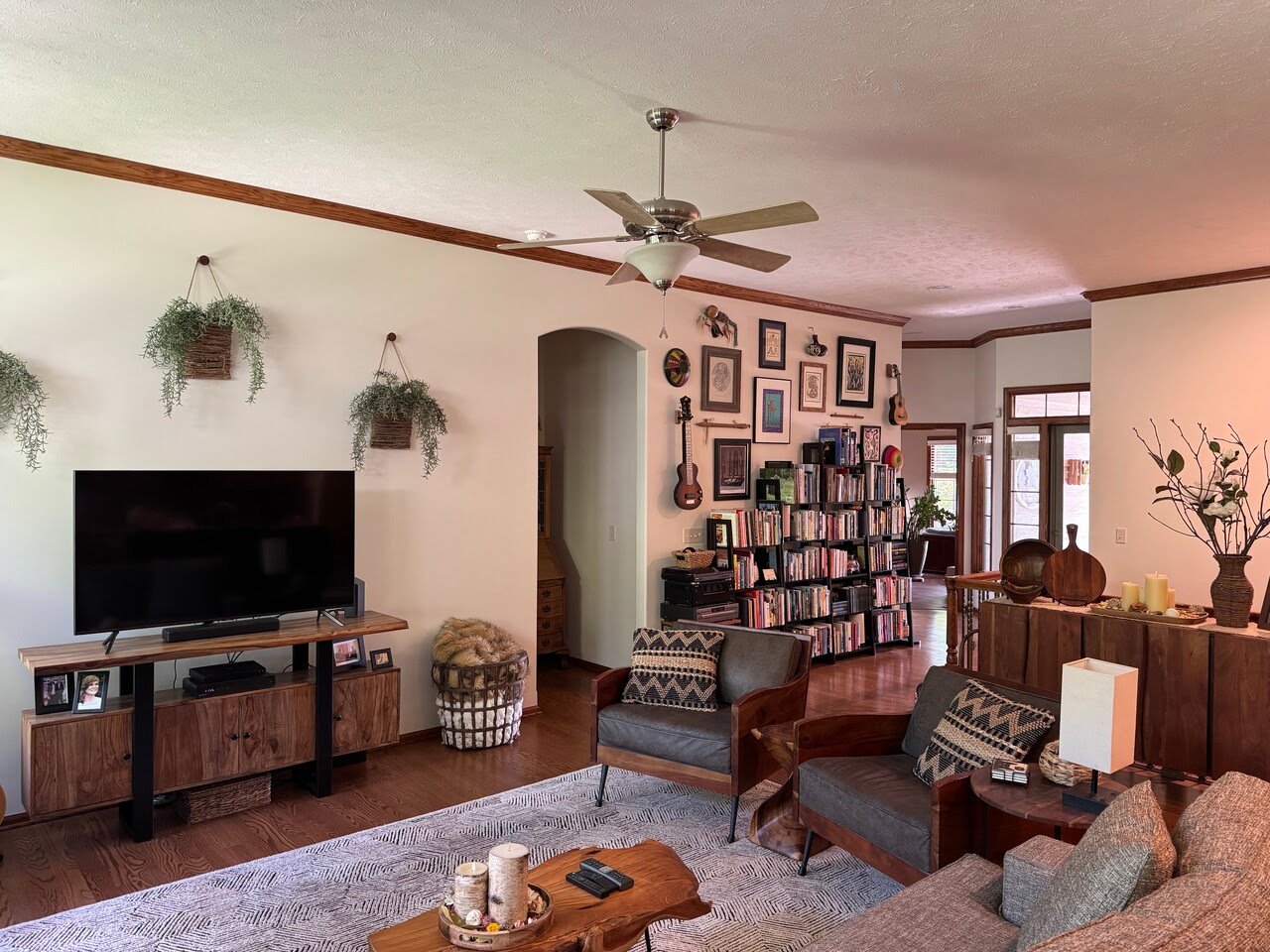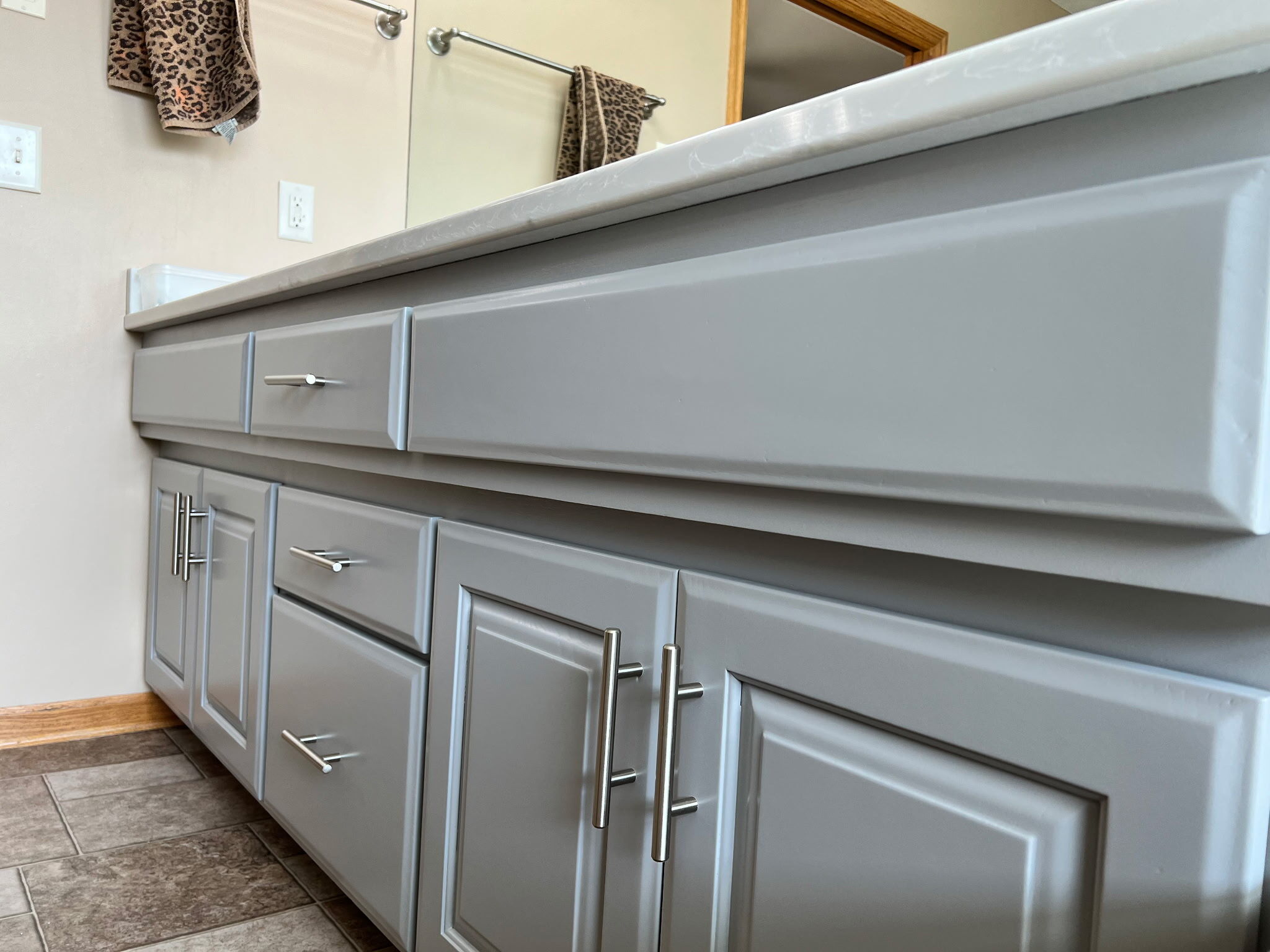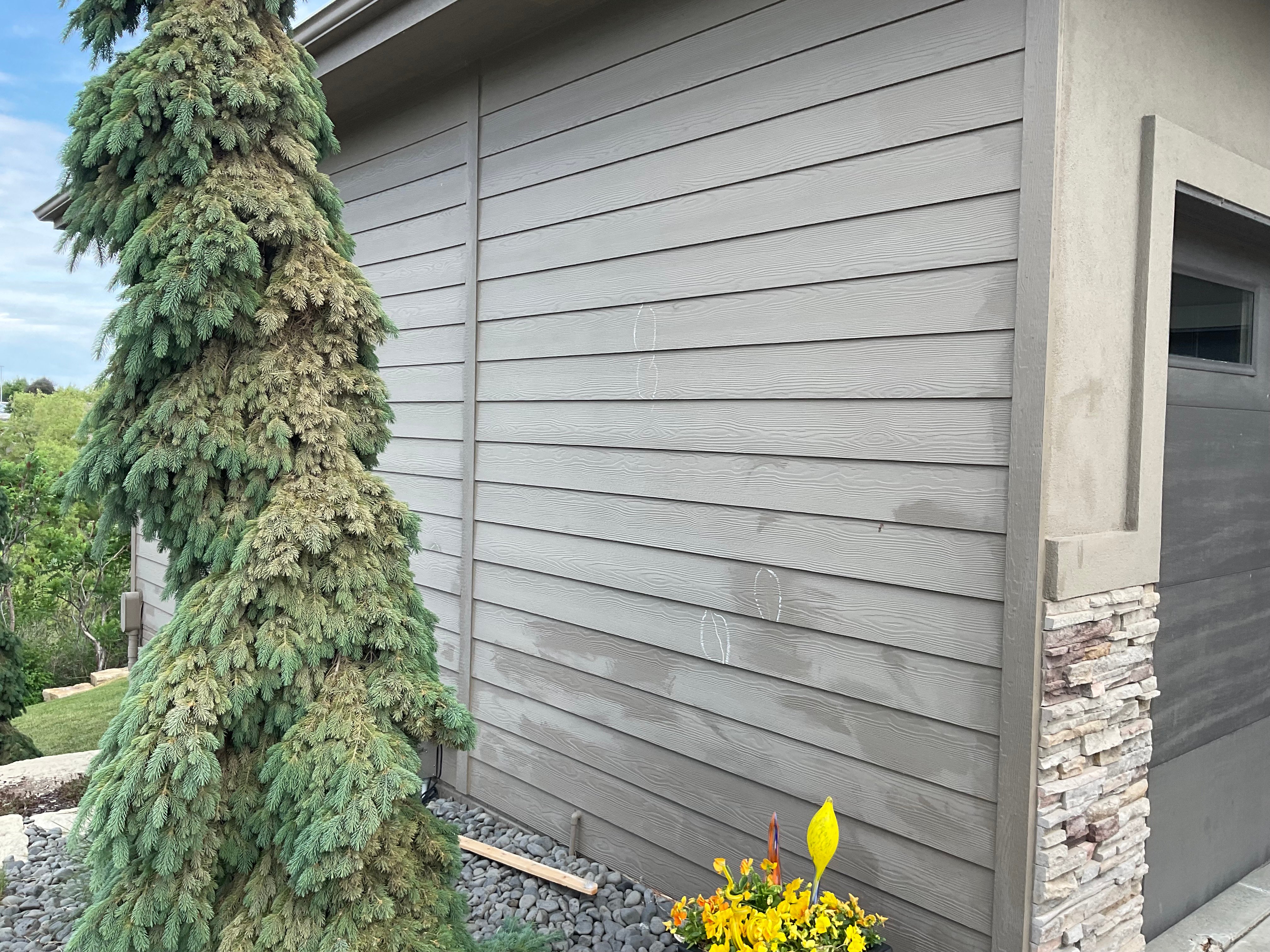How To Measure Your Home for the Cost of Interior Painting
October 23rd, 2024
4 min read
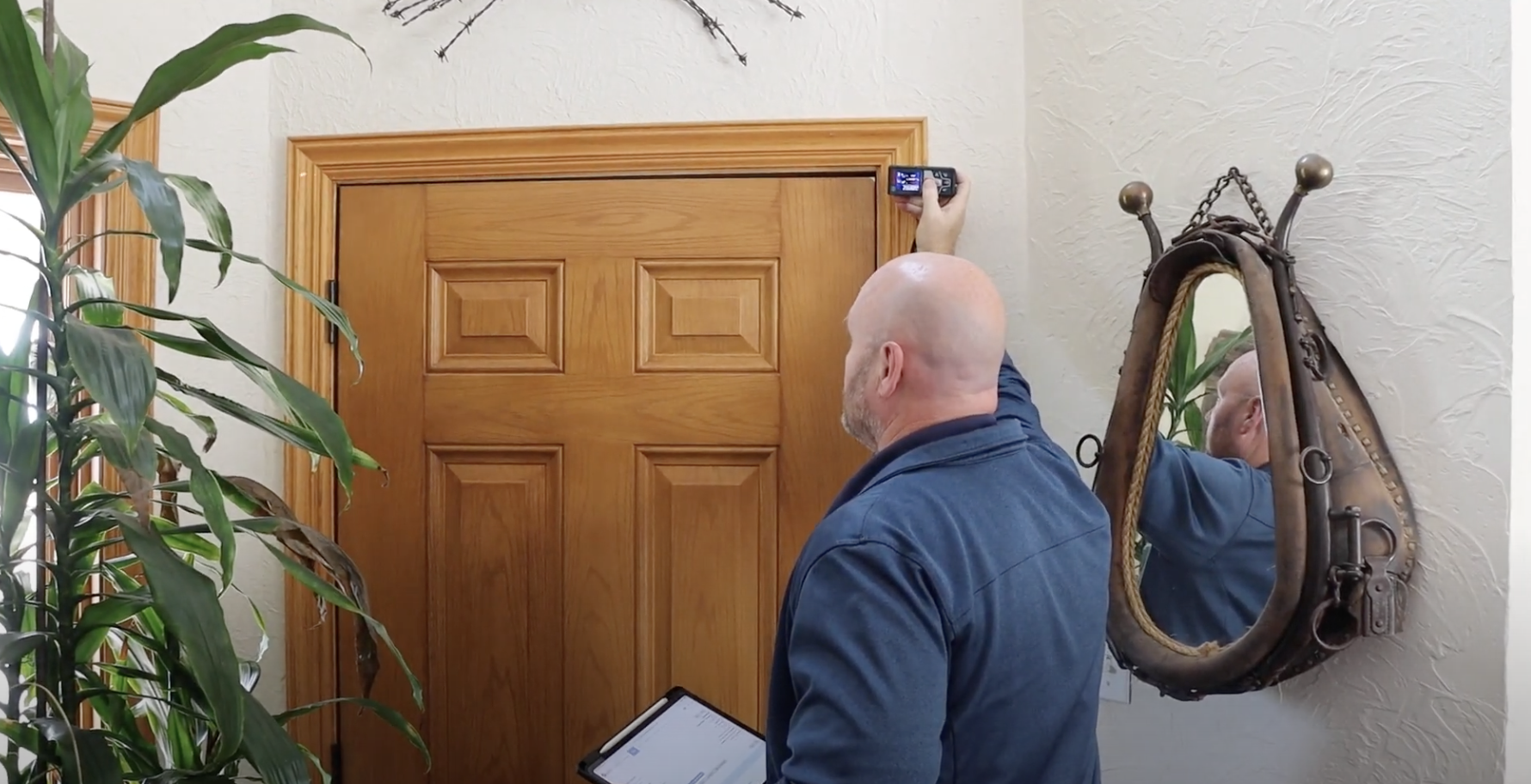
If you’re estimating the cost of your next interior painting project, you may need to get the measurements of your space. This may sound overwhelming and is where many people just opt for a rough estimate or go a different route. However, it may be simpler than you might think.
Here at Brush & Roll Painting, we've been helping folks in the Omaha area transform their homes for 27+ years. We believe in accurate measurements and transparent pricing to get painting projects done right.
In this article, we will go over the steps to measuring a room for painting. By the time you finish reading this guide, you'll know how to get a rough estimate for your project all on your own.
Measuring Your Room for a Painting Quote
Before we begin, you may be wondering, "How accurate do I really need to be?"
Don't stress if your measurements aren't perfect to the millimeter. The goal is to get a good estimate, not to recreate the blueprints of your house. As long as you're in the ballpark, you'll be in good shape.
After all, a painter should take measurements themselves for large projects to ensure they will give an accurate quote.
Step 1: Gather Your Tools
Let's make sure you have everything you need:
- Measuring tape
- Pencil and paper
- A friend (optional, but helpful for holding the other end of the tape and providing moral support)
-Oct-23-2024-08-53-30-6709-PM.png?width=584&height=305&name=Blog%20Post%20Image%20Size%20(1)-Oct-23-2024-08-53-30-6709-PM.png)
Step 2: Measure the Walls
Let's start with the walls - they're the main event in your painting project.
- Measure the length of each wall, from corner to corner.
- Measure the height of your walls, from floor to ceiling.
- Multiply the length by the height of each wall to get its square footage.
- Add up the square footage of all walls.
For example, let's say you have a 10x12 room with 8-foot ceilings:
- Two walls: 10 feet x 8 feet = 80 square feet each
- Two walls: 12 feet x 8 feet = 96 square feet each
- Total: (80 x 2) + (96 x 2) = 352 square feet
Pro Tip: Don't subtract the area of doors and windows from your measurements. Painters typically include these in their calculations because they still need to prep and work around these areas. It's like when you're making a sandwich - you still count the bread even if it has holes!
Step 3: Measuring the Ceiling
If you're planning to give your ceiling a makeover (and why not? It's like the fifth wall of your room!), you'll need to measure it too.
- Measure the length of the room.
- Measure the width of the room.
- Multiply these numbers together.
Using our 10x12 room example:
- Ceiling area: 10 feet x 12 feet = 120 square feet
Step 4: Woodwork: Measuring baseboards, crown molding, and door frames
- Measure the length of each wall where the baseboard or crown molding is installed.
- Add these measurements together.
In our 10x12 room:
- Baseboard length: 10 feet + 12 feet + 10 feet + 12 feet = 44 feet
- Crown molding length: 44 feet (if you have it on all walls)
-Oct-23-2024-08-52-49-5966-PM.png?width=633&height=331&name=Blog%20Post%20Image%20Size%20(2)-Oct-23-2024-08-52-49-5966-PM.png)
Step 5: Count Doors, Door Casings, and Windows
These elements might seem small, but they can have a big impact on your painting project.
Counting Interior Doors
This one's pretty straightforward, Each door in the room counts as one. So if you've got a closet door and an entry door, that's two doors. Keep in mind, that the price will reflect painting both sides of the door.
Counting Interior Door Casings
Now, door casings are where things get a little tricky. Door casings are the frame around your door. Here's how to count them:
- Around each door are two vertical sides and the top horizontal piece. This counts as one door casing.
- A door has two sides.
Let's say you have two doors in your room. That would give you:
- 2 doors x 2 casings each = 4 door casings
Pro Tip: Keep in mind if you only want one room painted, you should only count for one door casing.
Counting Interior Windows
When it comes to window trim, we count per opening.
- A single window (one pane of glass) counts as one window opening.
- A double-hung window (where you can slide the bottom part up) still counts as one window opening.
- A bay window typically counts as three window openings.
So, if you have two standard windows and one bay window in your room, you'd count that as:
- 2 standard windows + 3 for the bay window = 5 window openings
Why do we count like this? Because each window opening, regardless of its style, requires similar prep work and painting time.
Using Your Measurements for Interior Painting
Now that you've got your measurements, there are many ways to use them for your painting project.
- Online Calculators: Many painting companies (including us at Brush & Roll Painting) have online calculators where you can plug in your measurements for a rough estimate. It's like magic but with fewer rabbits and top hats.
- Pricing Pages: Similarly to online calculators, some painters may have a pricing page on their website. On this page, they will lay out their prices for each surface, but you’ll have to do the specific calculations.
- Getting Quotes: When you reach out to painters for quotes, having these measurements ready will make the process smooth. It allows painters to give you a more accurate estimate without having to visit your home first.
- Comparing Apples to Apples: With your measurements in hand, you can ensure that all the quotes you receive are based on the same scope of work. No more wondering if one painter is quoting for your actual living room while another thinks they're painting a broom closet!
Tips For Measuring Your Room For Painting
While we're on the subject, here are a few nuggets of painting wisdom we've picked up over the years:
- Be thorough in your measurements: The more detailed you are, the more accurate your quote will be. It's like baking - precision matters! If you have walls that pop out, make sure you count the length and height of each side.
- Consider the extras: Moving furniture, repairing drywall, or painting the insides of closets can affect the final price. Make sure to discuss these with your painter.
- Color matters: Dramatic color changes (like going from dark to light or vice versa) may require more coats and thus affect the price.
- Don't forget about prep work: A good paint job is 80% preparation. Make sure your final quote includes proper prep work for a lasting finish.
- Think about paint quality: Higher quality paints might cost more upfront, but they often last longer and look better, potentially saving you money in the long run.
Interior Painting Measurements for Your Home
With this direction, you're ready to get accurate painting estimates and make informed decisions about your interior home improvement project.
Measuring your room is just the first step in transforming your space. If you find yourself overwhelmed or just want to ensure a professional finish, that's where we at Brush & Roll Painting come in.
We've been helping Omaha homeowners bring their vision to life for years, and we'd be thrilled to help you too. Just click the button below to get started on your project.
Ready to see what your project might cost? Take the guesswork out of your budgeting by using our easy-to-use interior painting pricing calculator. With just a few clicks, you can input your room's dimensions and any additional details to receive a personalized estimate tailored to your specific needs.
This tool is designed to give you a transparent view of potential expenses, helping you plan effectively and confidently before you start painting. Click the button below to discover what your dream transformation will entail financially and bring your vision to life.
Kaylea is the Brush & Roll Painting Content Manager. Kaylea is a Journalism and Media Communications summa cum laude graduate with a minor in Marketing from the University of Nebraska at Omaha. Kaylea manages the marketing for Brush & Roll Painting.

-Oct-23-2024-08-55-23-3061-PM.png?width=603&height=315&name=Blog%20Post%20Image%20Size%20(3)-Oct-23-2024-08-55-23-3061-PM.png)













-Jul-23-2025-02-21-33-5468-PM.png?width=800&height=418&name=Blog%20Post%20Image%20Size%20(2)-Jul-23-2025-02-21-33-5468-PM.png)


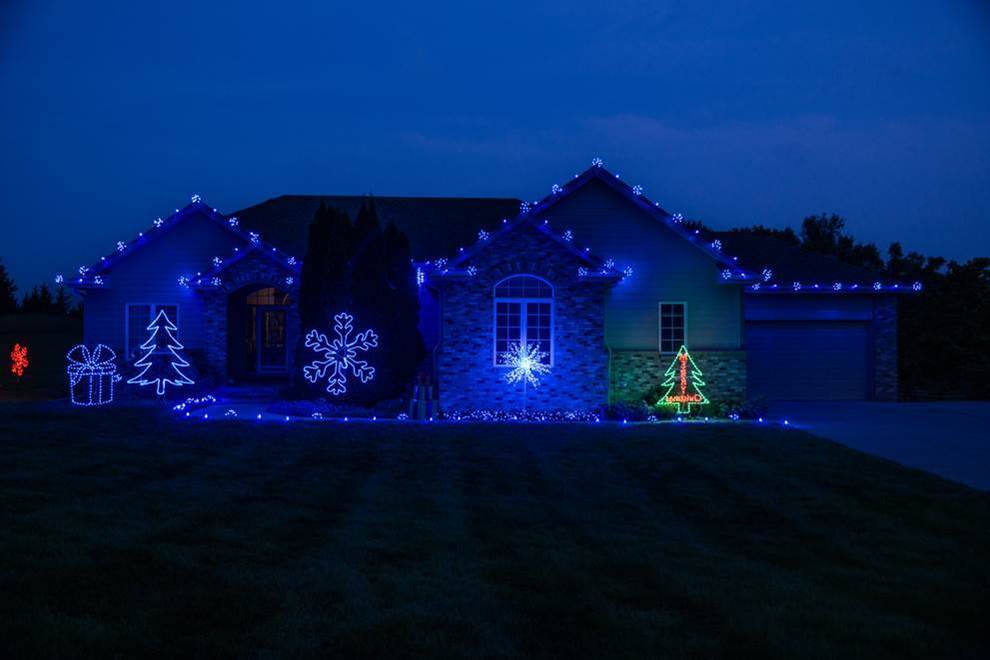
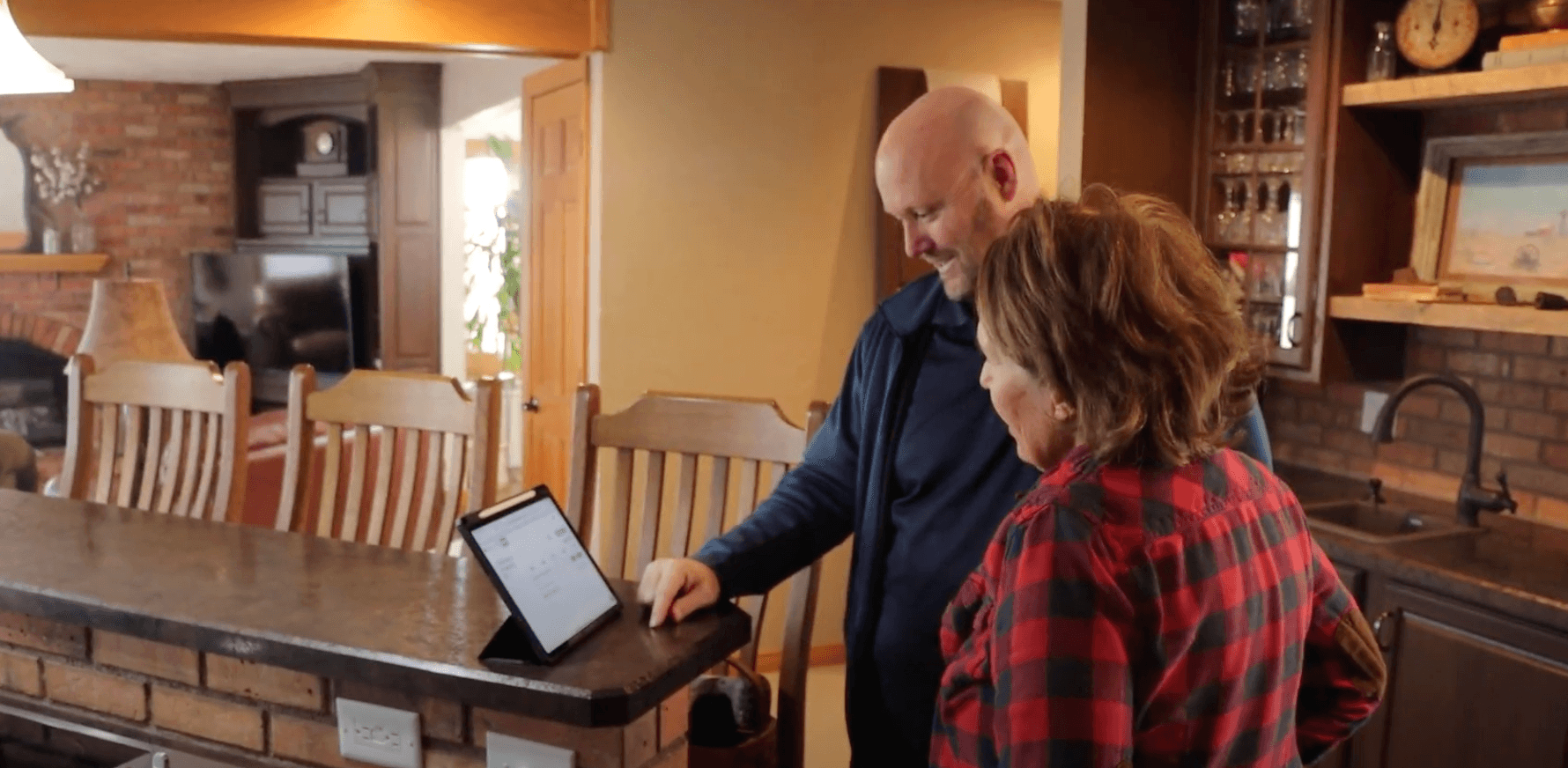
-Oct-22-2025-01-39-19-5208-PM.png?width=800&height=418&name=Blog%20Post%20Image%20Size%20(1)-Oct-22-2025-01-39-19-5208-PM.png)




